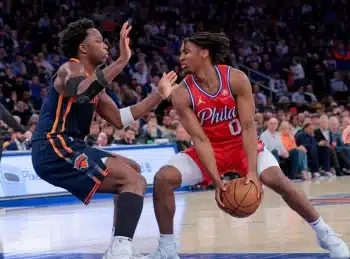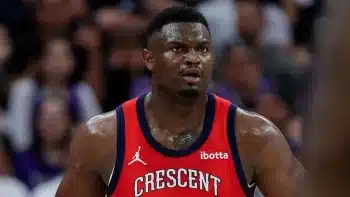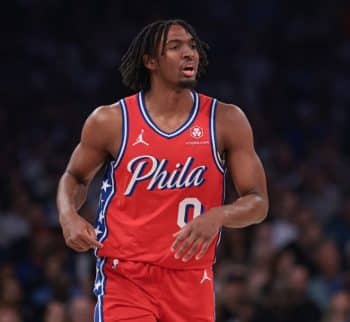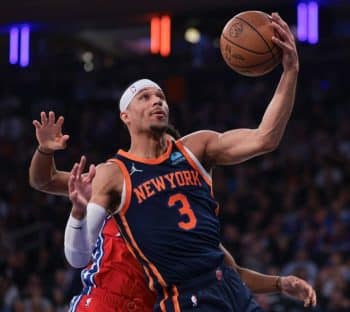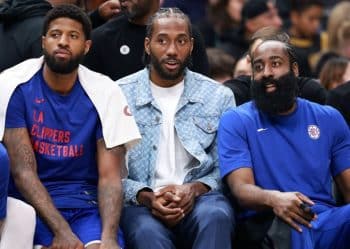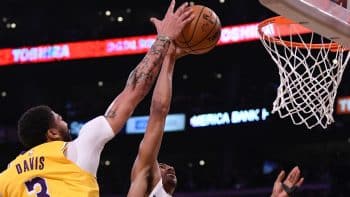NBA
What Makes A Good Leader in the NBA

As NBA players are focused on honing their games for the start of the season, there will be some players taking it upon themselves to also find ways to bring the best out of their teammates. With an assortment of veterans, newcomers and rookies on every NBA roster, the task for every coaching staff and player stepping into a leadership role this season is to generate a synergistic environment that breeds success. With there being so many different personality types and leadership styles at the NBA level, it begs the question: Is there one leadership style that is more effective than others?
According to Eric Weiss, founder of Sports Aptitude, a behavioral analytics firm that has put over 1,200 NBA prospects through psychological testing for approximately half of the franchises in the NBA, it depends. Weiss says there are seven different types of leadership styles that players employ, all of which can prove effective or ineffective based upon a mixture of circumstances. Some of the factors that can influence whether a player will prove to be an effective leader in a given situation can range from how well a player’s leadership qualities align with the organizational culture of the team, to how effectively different players can lead together, to how the personality make-up of the roster fits with that of the specific leader’s. When viewed from this angle, leadership is not just about being the most vocal player on the court, but is actually an amalgamation of many different elements.
For someone like Indiana Pacers point guard Jeff Teague, it remains to be seen if his leadership role this season with his new team will yield success. Teague was traded from the Atlanta Hawks to the Pacers over the summer and will be joining an Indiana squad with established veterans like Paul George, Monta Ellis, Thaddeus Young and Al Jefferson, as well as young upstarts in Myles Turner and Joe Young. By nature, Teague is not a tremendously vocal leader. However, he must find a way to command the respect of his new teammates in order to build a rapport and secure their confidence and trust. It is imperative for him to hit the ground running as one of the Pacers’ leaders.
Can Teague make for a good leader in Indiana even though he’s quieter than some of his NBA peers? Weiss thinks so.
“He is a good fit for the organization,” Weiss told Basketball Insiders. “He is being put in a position of authority and has the qualities that match well with the organizational culture. All of those things make him ideally suited for being a leader for a team with younger players.”
Additionally, according to Weiss, Teague’s deliberate nature, respect for authority, sentimentality and ability to connect with teammates will make him a strong leader for the Pacers.
Before retiring this season, Kevin Garnett and Tim Duncan were two of the most effective leaders of all-time and both employed drastically different leadership styles. Garnett was vocal and direct and led with the same ferocity that he had on the court, while Duncan was less vocal but equally as effective since he built rapport with teammates in order to more effectively lead.
Doc Rivers talked to ESPN’s Jackie MacMullan about Garnett in September.
“Most incredible leader I’ve ever seen. He loves the game and played it with a passion you just don’t see very often,” Rivers said. “He’s such a great teacher in practice. He should start a course in leadership. The NBA should designate who the best player is on each team and then they could bring Kevin in and he could teach them how to be the best player and the best leader. Better yet, they could bring him and Tim [Duncan] in and they could teach it together and show people how it can be done in two completely opposite ways.”
Los Angeles Clippers’ forward Blake Griffin recently talked to ESPN’s Kevin Arnovitz about Duncan’s leadership as well.
“The thing I took away the most was this idea that a leader isn’t the guy who’s pounding the chest, or huddles or giving motivational speech,” Griffin said. “It was really reassuring to me as a younger guy, that you don’t have to be something you’re not.”
Garnett and Duncan had different leadership styles and yet both were extremely successful leaders. Considering this and Weiss’s notion that effective leadership is a confluence of many factors, it’s apparent that effective leadership can vary from situation to situation. It is important to take into consideration that the organizations Garnett and Duncan played for could have helped reinforce their specific leadership style. In addition, as Griffin has alluded to, maybe the most important takeaway for younger players regarding the dichotomy of Garnett and Duncan’s style is for a player to find a way to lead that is both comfortable for them and allows a connection to be made among teammates. For Teague, he already seems to have this part down.
Last season in Atlanta, Teague split time with Dennis Schröder at the point guard position and helped his young back-up develop.
“I’ve always led by example, and I always get attached to the young guys,” Teague told Basketball Insiders. “I feel like I’m a still a kid at heart and I’m a baby-faced-looking guy who only looks, like, 21, so I think we relate a little bit. (laughs) I try to talk to them and tell them what I’ve learned – the things that have helped me and allowed me to get to some of the places that I’ve been. I want to do whatever I can to help them. I’m always asking for their opinions too. I ask them what I can do to help them get better. I’m an open book. I like to talk to everybody and I’m easy going.”
Teague intuitively understands this and knows that connecting with younger teammates while also building the trust with the more tenured members of his team will allow him to hold his teammates accountable when it comes time to do so on the court.
“I like to work with everybody,” Teague added. “I don’t think I’m too big [time] to hang with the younger guys or too whatever to hang with the older guys. I’m just open with everyone. I’m always trying to learn too, and I’m always ready to work.”
There still may not be a clear answer as to whether one leadership style is more effective than another. However, it seems that players with different leadership styles can lead effectively if certain team dynamics are in place, and if the players are being themselves and finding ways to connect with teammates. As the NBA season opens up, it may be worth noting that leadership is multi-dimensional and fluid based upon each player’s specific situation.
